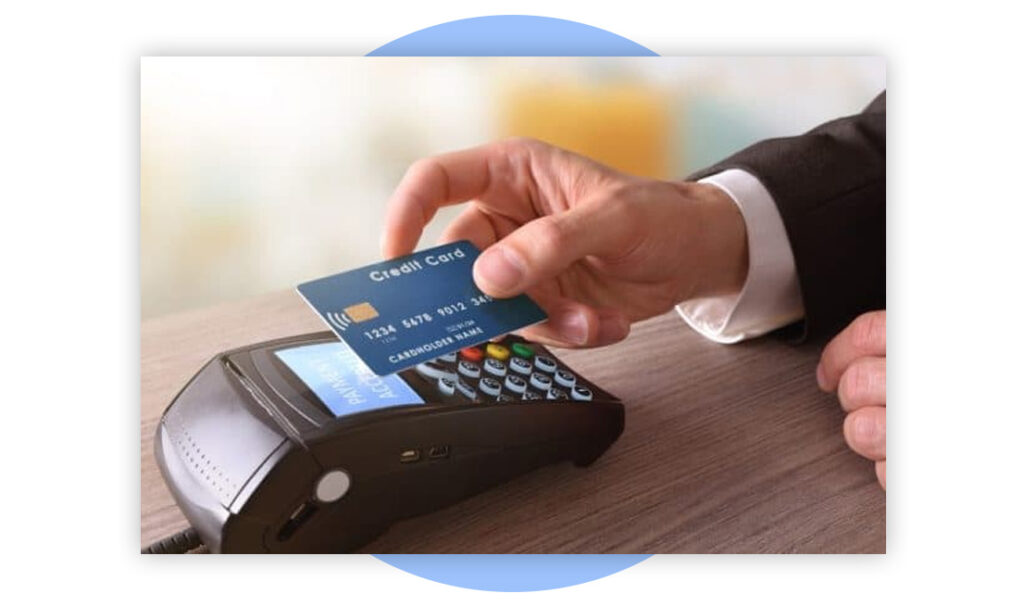As a small business owner, you work hard, and the money you make should belong to you. So why does it not feel that way? There are so many hidden costs associated with the payment collection process, and it feels purposefully cryptic when it should feel transparent and straightforward. In this post, we’re going to demystify all of the major payment methods and talk about the pros and cons of each one.
In reality, you’re probably going to accept a few of these types of payment methods (because, after all, a payment is a payment), but we hope that this post will shed some light on why it might be advantageous for your business to move away from physical payments and onto electronic ones—and how using many different payment platforms might actually be hurting your bottom line.
Checks
Pro: Convenient for customers who aren’t a fan of technology
Cons: Easily lost, stolen, damaged; cap on amount of transactions; potential for fraud, have to manually reconcile whether they paid or not, time-consuming to deposit
Checks are, perhaps, the riskiest payment method of the lot. Because it’s just a sheet of paper, it could be easily lost or damaged with no opportunity for recourse because there’s no digital trail. Worse, checks could be stolen, so there’s potential for fraud. Checks also have the possibility of bouncing if there aren’t enough funds in your customer’s account, which could lead to consequences beyond not being able to access the funds from that particular check—you may be charged a penalty fee (ranging from $15-$40 depending on your bank) and you could be responsible for repaying any money that you’ve withdrawn from that check. Because of this risk, checks take longer to process and settle than the other methods.
There’s a cap on the amount you can deposit into your bank account via checks each month. Above that threshold, you’d have to pay a certain percentage of the amount you deposit. There’s also a cap on the number of times you can deposit checks each month. Some digital-only banks limit you to only 20 monthly check deposit transactions! Check with your bank, because the fees and thresholds vary from bank to bank.
Cash
Pros: Possibly none
Cons: Risk of being lost, stolen, damaged; bank fees for cash deposits; hard to keep track of who paid, time-consuming to deposit
Cash is a little less risky than checks, but only just. Cash still runs the risk of being lost, damaged, or stolen, all without recourse, but because there’s no identifying information on it, there’s less risk of fraud. However, because there’s no name associated with cash, it’s hard to track which one of your customers paid you and when they did so.
Banks sometimes charge for cash deposits because cash needs to be counted by a teller. This amount varies from bank to bank, so check with your bank before you bring your cash in to deposit.
Credit Card
Pros: convenient for customer, could bring in more business if option was available
Cons: Tons of fees (interchange, acquirer spread, monthly, early termination, transaction), possibility of chargeback
Credit cards are the most popular type of payment method in the United States, making up 38% of all retail transaction payments. Many customers are attached to their credit cards because they are so convenient and offer attractive perks. However, credit cards also take the biggest tolls on small businesses, with fees up to 4% of each transaction, broken down into an interchange fee and an acquirer spread. If you get into a contract with a merchant processor, they often charge monthly fees and have early termination fees. So all in all, that could add up to thousands of dollars a year! Credit card companies also allow the customer to file a chargeback, which you’d have to spend time dealing with. What a headache!
Debit Card
Pros: convenient for customer, less opportunity for customer chargeback
Cons: Fees (flat amount + percentage of transaction)
Debit cards are the second most popular payment method in the United States, right behind credit cards. While the fees for debit card transactions are generally a little lower than for credit card transactions, they still add up. Here are the two ways your customers can use their debit cards and the fees you’ll incur as a result.
- Signature Debit: If your customer uses their debit card like a credit card (i.e. they swipe their debit card through and chooses to process the card as “credit”), you’ll incur an interchange fee (calculated as a flat amount + percentage of the transaction) routed through a credit card network.
- PIN Debit: If your customer uses their debit card like a debit card (i.e. they swipe their debit card, choose to process the card as “debit,” and enter their PIN), you’ll incur an interchange fee (also calculated as a flat amount + percentage of the transaction) routed through an ATM network.
For more information on interchange fees, read here.
ACH (Automated Clearing House/E-Check)
Pros: safe, low cost, quick transfer of funds
Cons: technologically hesitant customers may not jump on board
ACH, the electronic transfer of money from bank account to bank account, is the safest payment option available. There’s less risk of the fraud and tampering that’s possible with check and cash. While most banks charge a flat fee for ACH, Finli offers it for free! (Through Finli, you could also automate your ACH payments, which means less room for human error and less time managing payments overall.) For more reasons to consider offering ACH as a payment option, check this out.
Now that we’ve talked about some of the most common payment methods out there, let’s discuss some of the payment platforms your customers are most likely asking you to offer.
Venmo
Pros: Convenient for customer, easy to accept payment
Cons: Not for business use, possibility for frozen account and reversed payments, low transaction limits, hard to track who has paid and who hasn’t
Venmo may be convenient, but it is best reserved for payments between family and friends. Venmo isn’t the best for business transactions because it has a person-to-person transaction limit of $300, as well as a weekly transaction limit of $5,000. On top of that, unless you’re explicitly authorized by Venmo to accept payment from another user for a good or service, you’re prohibited from performing these transactions in the first place. Venmo has the ability to freeze your account for up to 180 days and reverse the offending transactions if you’re not an authorized business on their platform. Not to mention, it’s incredibly difficult to keep track of payments on Venmo; their layout looks more like a social media platform than anything else. You’d have to keep a separate spreadsheet to keep track of who’s paid and who hasn’t.
Learn more about whether or not to accept Venmo as a payment method here.
PayPal
Pros: trusted by customers, high transaction limits, ability to easily see who has paid you and who hasn’t
Cons: high transaction fees, high rate of customer dispute, PayPal has the ability to hold your funds
Many small businesses use PayPal, and for good reason. It’s a platform that’s trusted by customers because they know they can get support or dispute unauthorized payments. PayPal also does not charge small businesses any monthly fees, subscription fees, or cancellation fees. The transaction limit is high: up to $60,000, including $10,000 in a single transaction. All of this sounds fantastic—what are the drawbacks?
PayPal makes their money from charging small businesses higher transaction fees (2.9% plus 30 cents if paid with debit or credit card). PayPal also has a high rate of customer dispute. And if one of your charges gets disputed, PayPal can hold your funds for up to 180 days. Yikes!
Zelle
Pros: instantaneous transfers, no fees for small businesses
Cons: no opportunity for recourse if money is sent to the wrong place, can’t send invoice through Zelle, no reconciliation, no auto-pay
Zelle offers the ability to transfer funds directly from bank account to bank account. And the best part? These transfers are instantaneous, and Zelle doesn’t charge any fees for those who are receiving these transfers. Transaction limits vary at different banks, so check with your bank to make sure what your transaction limit is. So what’s the catch?
Customers may be more hesitant to use Zelle as a payment method because there’s little opportunity for recourse once the funds are sent. They can send money directly to any phone number or email address associated with a Zelle account, and if there’s a typo anywhere, those funds are lost. You are also unable to send invoices within the Zelle app, so you need to send a separate invoice and specify that you’d like to be paid through Zelle. Because you can’t send invoices in-app, there’s a lack of reconciliation. In addition, it’s impossible to set up auto-pay on Zelle, so it’s only good for a one-time business transaction or transactions from peer to peer.
Here are some things you may want to keep in mind when considering which payment options to offer:
- How risky is this payment option?
- What fees are associated with this option?
- How can I balance my customer’s desire for convenience with my desire for cost-effectiveness and efficiency (reconciliation, auto-pay, etc)?
You need to be able to accept the most common payment methods like credit cards, debit cards, and ACH (bank-to-bank transfer), but using a bunch of different payment platforms like Zelle, Paypal and Venmo in conjunction makes reconciling and managing payments a tricky matter. Having to manually record and keep track of payments as well as chase down customers who haven’t paid is a huge timesuck and has consequences on your bottom line.
That’s why we built Finli, a comprehensive payment platform that allows you to collect payments through credit cards, debit cards, and ACH, send out invoices (one-time or recurring), and keep track of all of your customers, so you can focus on doing what you love instead of payment-related busywork. Schedule a demo here.





